People and corn have a long history together. Michael Pollan argues in The Omnivore’s Dilemma that, instead of humans domesticating corn, corn may have domesticated humans.
Today, over a billion metric tons of corn are grown per year; broccoli and kale could learn a thing or two from this extremely persuasive crop. Although, corn has a few advantages over green veggies.
Corn is a staple crop, meaning that it can give us lots of energy in the form of calories (as well as providing important micronutrients). It’s incredibly versatile, playing a starring role in dishes from around the world. And it comes in many varieties and types, including popcorn, flour corn, corn on the cob, flint corn (for decoration and hominy), and field corn (for ethanol, cornstarch, and high-fructose corn syrup).
Because corn products are so prevalent in packaged foods, the average American has been called a “walking corn chip.” Researchers estimate that roughly two-thirds of the food eaten in a modern industrialized diet comes from either corn, rice, or wheat.
In this article, I’m not going to try to get you to eat more corn chips, soda, cookies, or bottled salad dressings. Instead, I want to toot the horn for healthy whole corn. We’ll look at the best ways to choose and store corn, ways to cook it, and secrets to making the most of it in your recipes.
Corn Taste and Nutrition
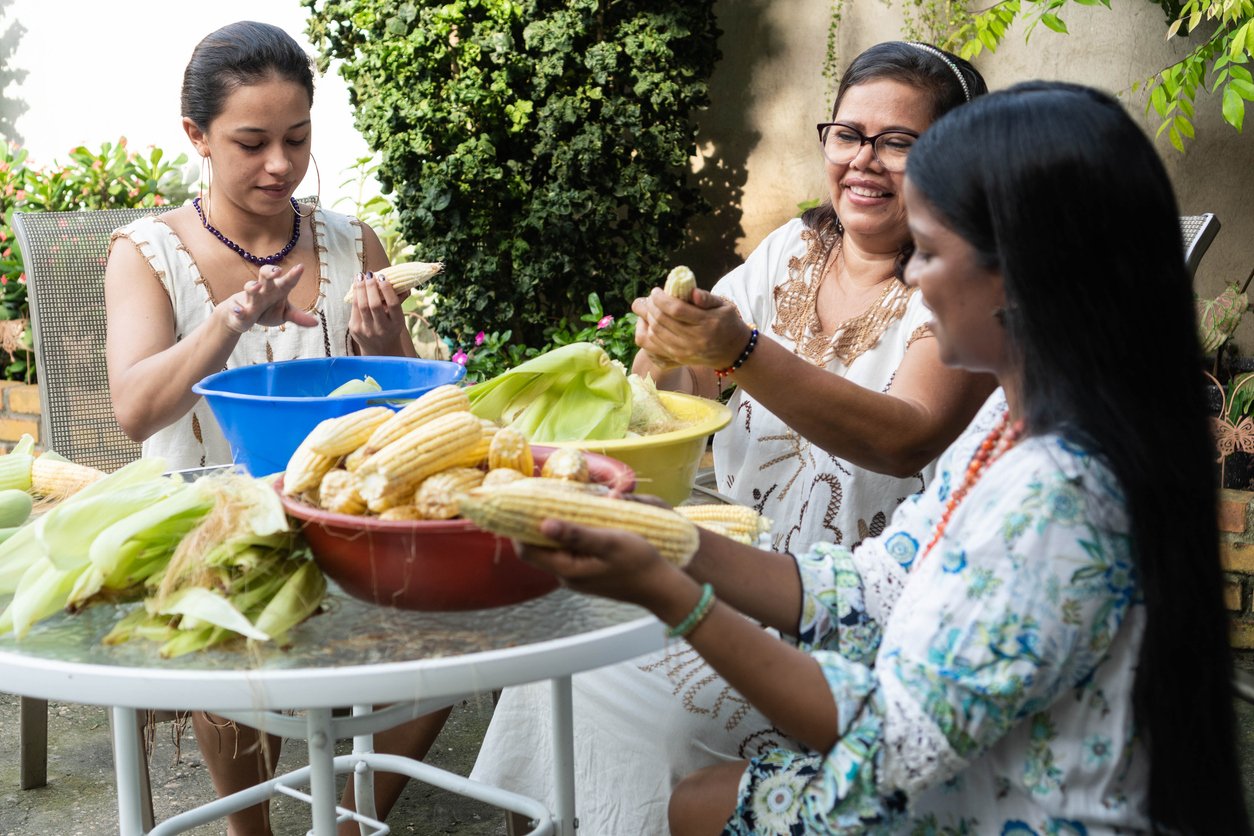
Corn has been one of the most important cereals in human nutrition worldwide for millennia. It’s high‐energy and micronutrient-rich, providing an estimated 19% of calories worldwide.
And oh, what micronutrients! Corn is a good source of carotenoids and polyphenols, which are associated with a lower risk of various degenerative diseases. It’s also high in a variety of B vitamins and minerals, and contains the ever-important (but often lacking) nutrient — fiber.
While field corn kernels are high in starch, sweet corn kernels are higher in moisture and sugar content. That’s why the best ears of sweet corn have a sweet and juicy taste.
When Is Corn in Season?
Corn is in season during the warmer months of the year. You can typically find delicious ears of corn by midsummer, and the harvest can last well into the fall. In the US, this means May through October are corn months, and there is a slightly shortened season — July through October — in Canada.
In the southern hemisphere, corn harvests happen earlier in the year, starting in February and continuing through May or even later.
But wily corn isn’t satisfied with us eating it fresh just a few months out of the year. It’s also convinced us to freeze it in the form of corn kernels or baby corn so we can enjoy it year-round.
How to Choose and Store Corn
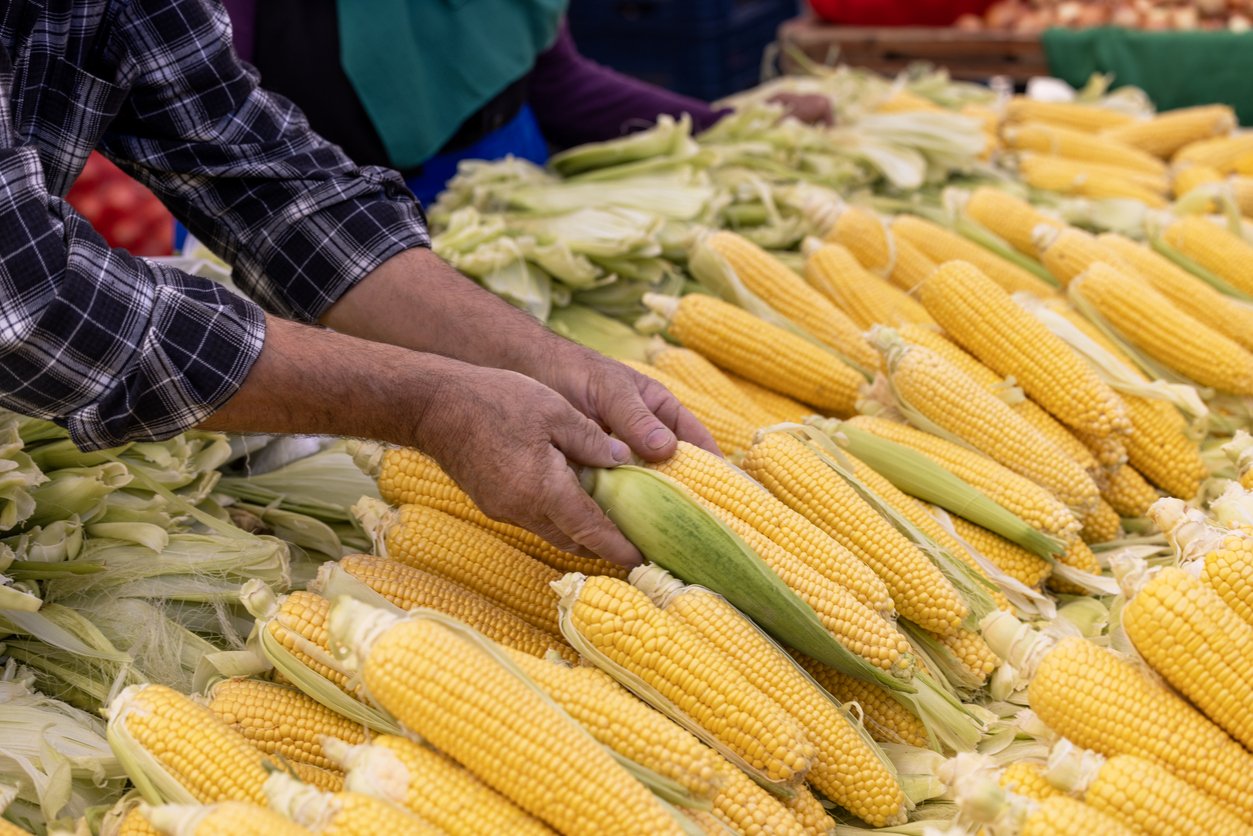
Among the great debates of our time are if the toilet paper should unroll over or under and whether the dress was gold and white or blue and black. But arguably more passionate is the dispute over whether you should remove the husk of an ear of corn in the store, or wait until just before cooking it.
An argument in favor of in-store shucking includes keeping the husks out of your kitchen. There’s also the ability to see whether the kernels are fresh and fully developed before you bring it home rather than later discovering an innocent-looking insect and a small mountain of worm poop under the husks.
But some markets discourage this practice — partly because they don’t want their bins littered with rejected ears of corn, and partly because it can lead to food safety issues.
The best reason to wait to shuck corn, in my opinion, is that it keeps fresher in the wrapper nature gave it.
When choosing corn on the cob, look for uniformly green and tightly wrapped ears. The cob itself should feel firm all the way around. If you notice that the brown silk peeking out of the top is slightly damp, that’s a good thing. However, if the husk has any holes in it, choose another one — this could indicate worms.
When you get home, tightly wrap the corn ears in a produce bag (or some more eco-friendly wrap) and place them in the refrigerator. Corn usually stays fresh for a few days stored this way. You can also freeze it. To do this, you might want to blanch the corn — either in whole form or just the kernels — and then place it in the freezer. This will help maintain its color, texture, and freshness.
- Cooked corn can last for 3–5 days in the refrigerator
- Frozen corn can last from 8–12 months in the freezer
How to Prepare and Cook Corn
If you buy corn in its husk, you’ll have to shuck it, or remove the papery outer layer and “silks.” Start by peeling back the outer leaves, then the inner leaves. When you have all of the leaves and most of the silks peeled back, break them off the end of the cob. You will probably have some pesky silk left. Watch the video below to find out how to remove it with a minimum of fuss and effort.
https://www.youtube.com/watch?v=Vt9njKC-dNw
The fierce debate about shucking corn doesn’t end with the “market vs. home” question. Some schools of thought assert you should dehusk the ears before cooking; others say to cook with the husk on.
I find that when I’m boiling or steaming fresh ears of sweet corn, I like them shucked and desilked. But when grilled, the outer layers can protect the kernels from burning while still allowing the corn to take on a smoky flavor. Depending on the freshness and moisture content of the outer leaves, presoaking may or may not be necessary.
There are many ways to cook corn; choose a way based on how you’re planning to serve and eat the corn. In addition to being grilled, fresh corn on the cob is typically boiled, steamed, or microwaved.
If it’s popcorn, you can heat the dried kernels in a pot or kettle, an air popper, or a microwavable bag.
Nixtamalization is a traditional process used to treat corn very common in indigenous cuisines in the Southwest US, Central America, and Mexico. The dried corn kernels are soaked, cooked in an alkaline solution, and then allowed to rest for several hours. The resulting product, known as nixtamal, can be ground to make masa (dough), which is used to make tortillas, tamales, and other traditional dishes.
How to Use Corn
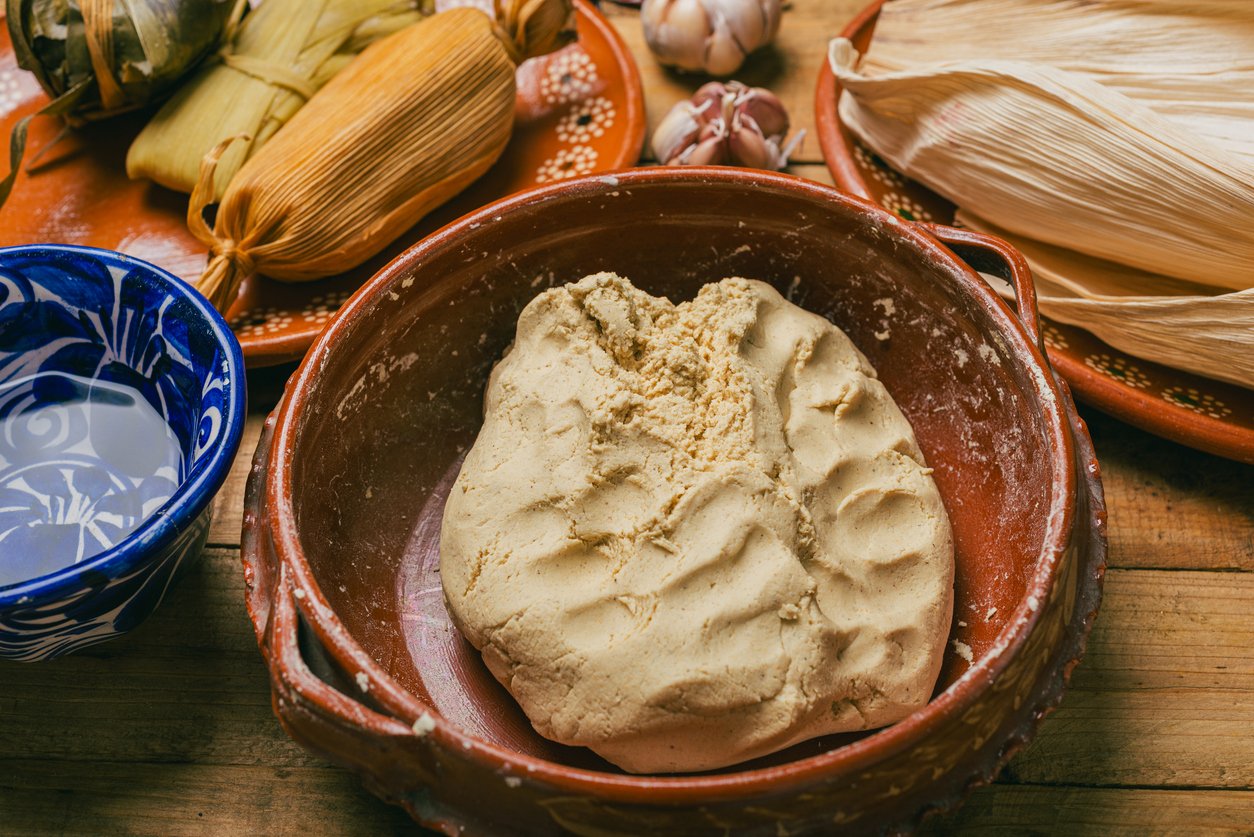
You can use fresh whole corn or baby corn, frozen corn kernels, or canned corn. If using canned, look for low-sodium varieties and cans that are free of BPA, an endocrine disruptor that you don’t want in your body.
Although most sweet corn is non-GMO, buy organic corn when possible to avoid the 10–25% that’s not.
You can also make your own corn tortillas or tamales from nixtamalized masa harina — look for organic brands to avoid GMO corn, as well as pesticide exposure.
Here are some ways to get more corn into your life:
- Add raw or cooked corn kernels to salads.
- Add it to soups, chowders, and chilies for extra sweetness and texture.
- Mix corn with ingredients like tomato, onion, cilantro, and lime for a fresh salsa or relish.
- Add corn to warm dishes like stir-fries, casseroles, and pie.
- Mix cornmeal into bread, pancakes, or muffins for added texture and flavor.
- Boil corn with cinnamon and other spices to make traditional Latin American beverages like atole.
Corn Recipes
Get ready to fall in love with corn with these seven mouthwatering plant-based recipes! Corn is the star of the show, bringing its natural sweetness and juiciness to every dish. Enjoy smoky, Mexican Street Corn topped with creamy vegan mayo and a sprinkle of Vegan Walnut Parmesan. Or dive into a warm bowl of Creamy Corn Chowder, packed with fresh veggies and plenty of corn for a nourishing and cozy meal. Spice things up with a zesty Colorful Black Bean and Corn Salsa, perfect for topping your favorite plant-based tacos. Savor the comfort of naturally sweet, fluffy Jalapeño Cornbread, a perfect side for any dinner. No matter which you try first, these recipes make it easy to enjoy the wholesome goodness of corn in every bite.
1. Refreshing Corn and Tomato Salad
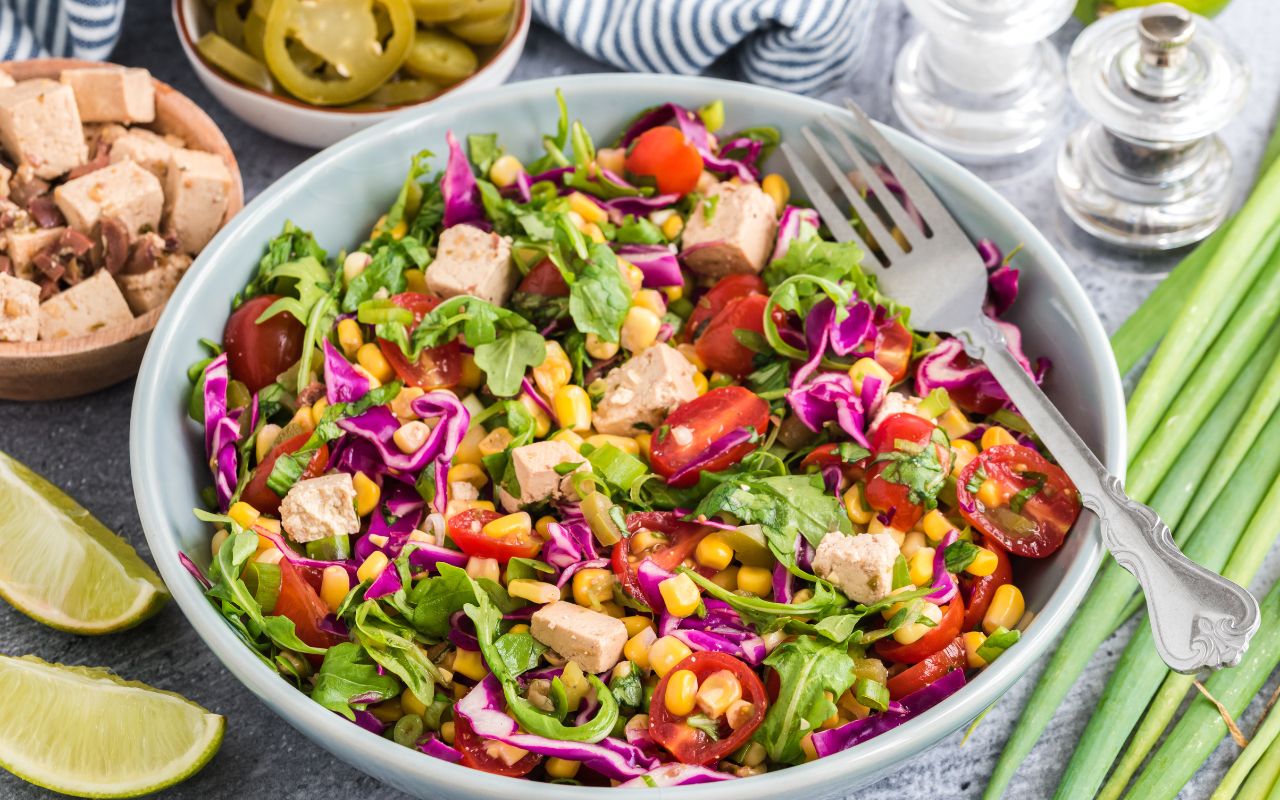
Elevate your salad game with this Refreshing Corn and Tomato Salad, a vibrant dish that highlights the natural sweetness and crisp texture of organic corn. This salad combines juicy organic cherry or grape tomatoes, peppery arugula, and crunchy purple cabbage, creating a colorful and nutrient-packed meal base. Fresh basil and green onion add a burst of flavor, while a squeeze of lime juice and firm avocado bring delightful zest and creaminess. Our Vegan Tofu Feta and a touch of jalapeño add a unique twist, enhancing the veggies’ depth and complexity. Perfect for a light lunch or a side dish, our corn and tomato salad is a delicious way to enjoy the wholesome nutrition of corn.
2. Creamy Corn Chowder
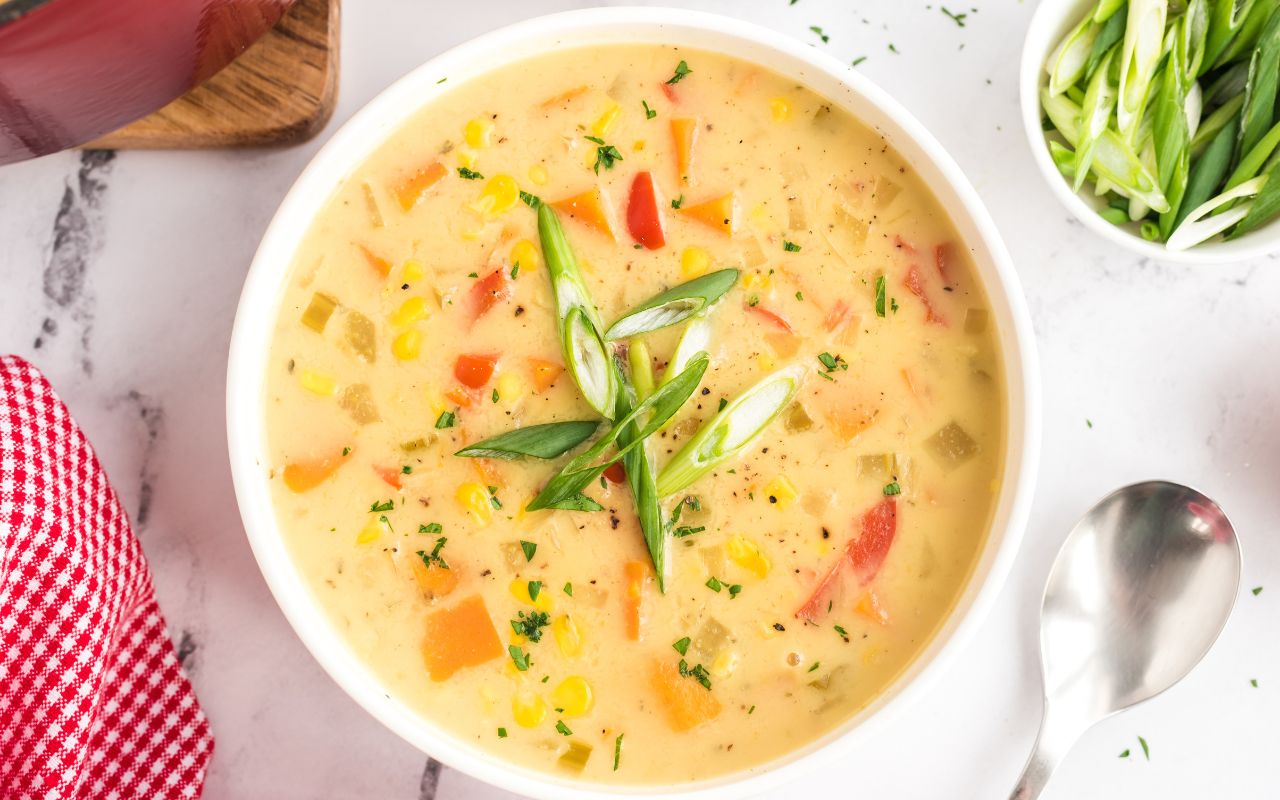
Creamy Corn Chowder is a creamy, dreamy, and savory dish that brings corn to life through the power of plants. The natural sweetness and crisp texture of corn is beautifully complemented by hearty sweet potatoes, vibrant red bell pepper, and crunchy celery. Fresh thyme, ground cumin, and turmeric infuse the chowder with a warm, comforting aroma and taste. Rich in fiber, vitamins B and C, and antioxidants, this soup supports digestive health and immunity and provides sustained energy. Blended with creamy coconut milk, this chowder is both indulgent and nourishing. Top it off with green onions, parsley, and a hint of crushed red pepper flakes for an optional spicy kick. This chowder is a perfect go-to for a soul-fulfilling dish that might become a staple for the entire family.
3. Tortilla Soup
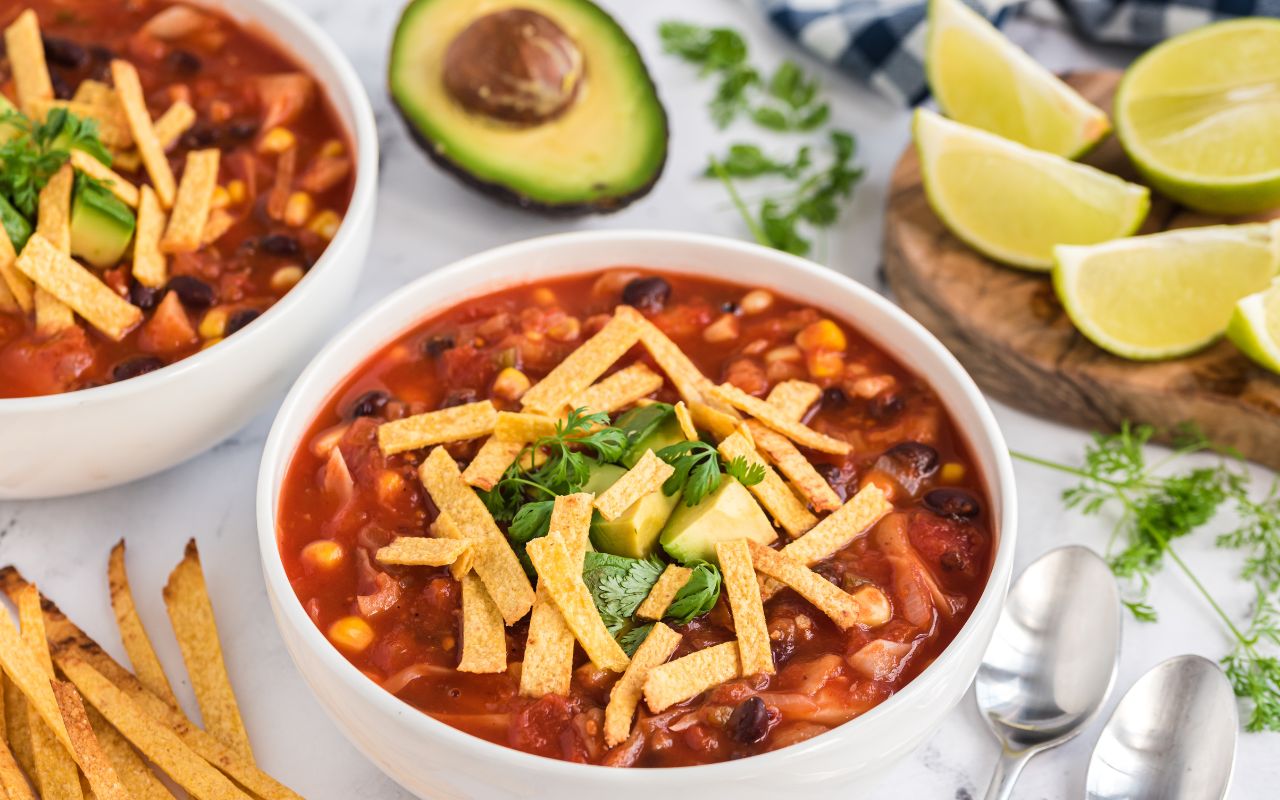
Enjoy corn in two ways in this delicious Tortilla Soup. The tantalizing, tomato-based broth is infused with savory and familiar Mexican spices, offering a rich source of antioxidant phytonutrients. Fiber-rich black beans and shredded jackfruit add hearty texture and nutrition. Fresh corn (or frozen and thawed) brings a sweet burst of freshness, perfectly complementing the bright and zesty flavors that tie the broth together. Topped with crispy lime-flavored baked tortilla chips for the perfect crunch, this soup is a wonderful way to eat corn!
4. Colorful Black Bean and Corn Salsa
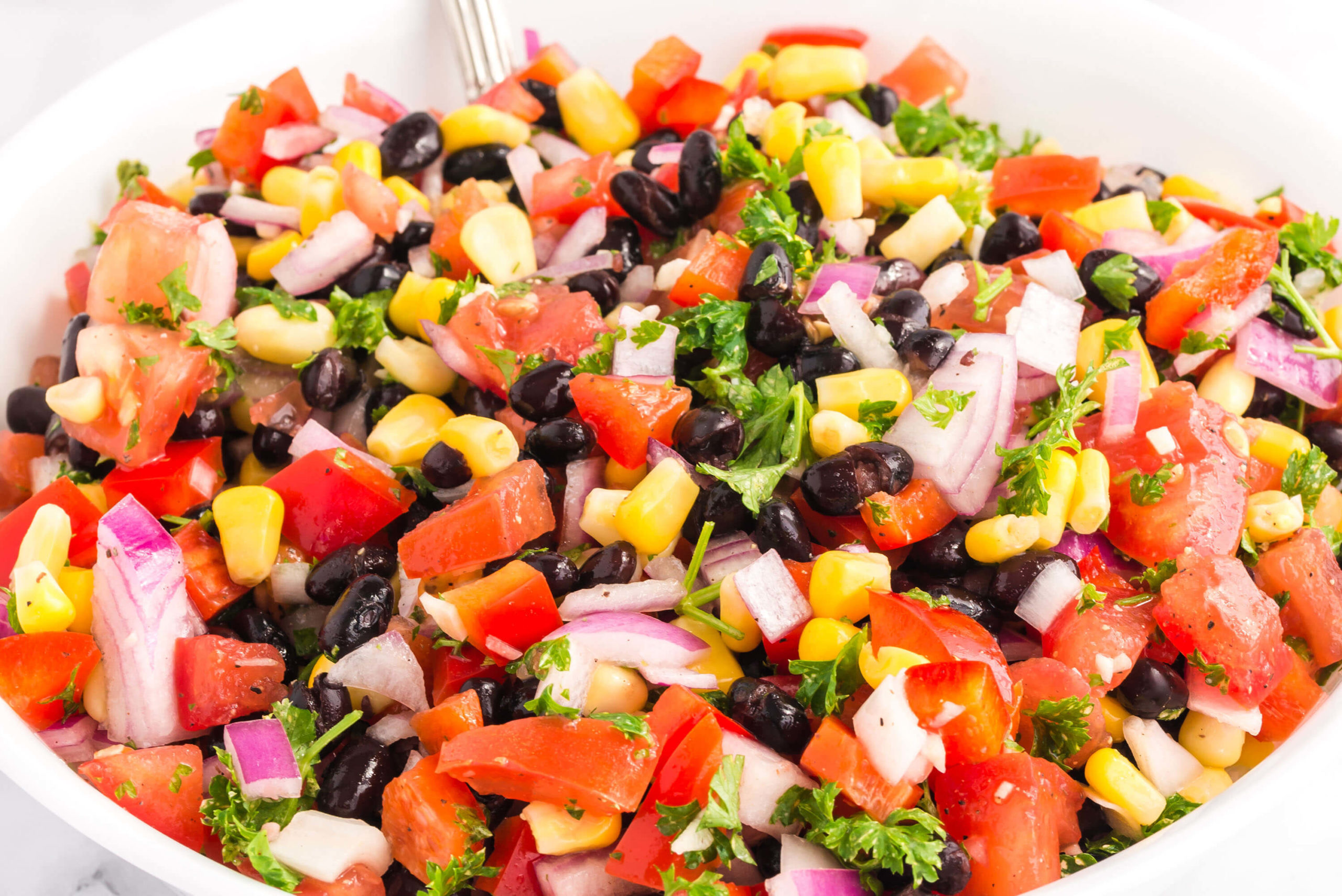
Colorful Black Bean and Corn Salsa is a quick, 15-minute recipe full of bright and zesty flavor, as well as plenty of fiber, protein, and phytonutrients. Corn adds a natural sweetness and crisp texture to this salsa, taking it to the next level. Enjoy it by itself as a snack, on top of tacos, in a vegetable wrap, on top of avocado toast, in a salad… and the list goes on! (P.S. The flavors get even better the next day!)
5. Mexican Street Corn
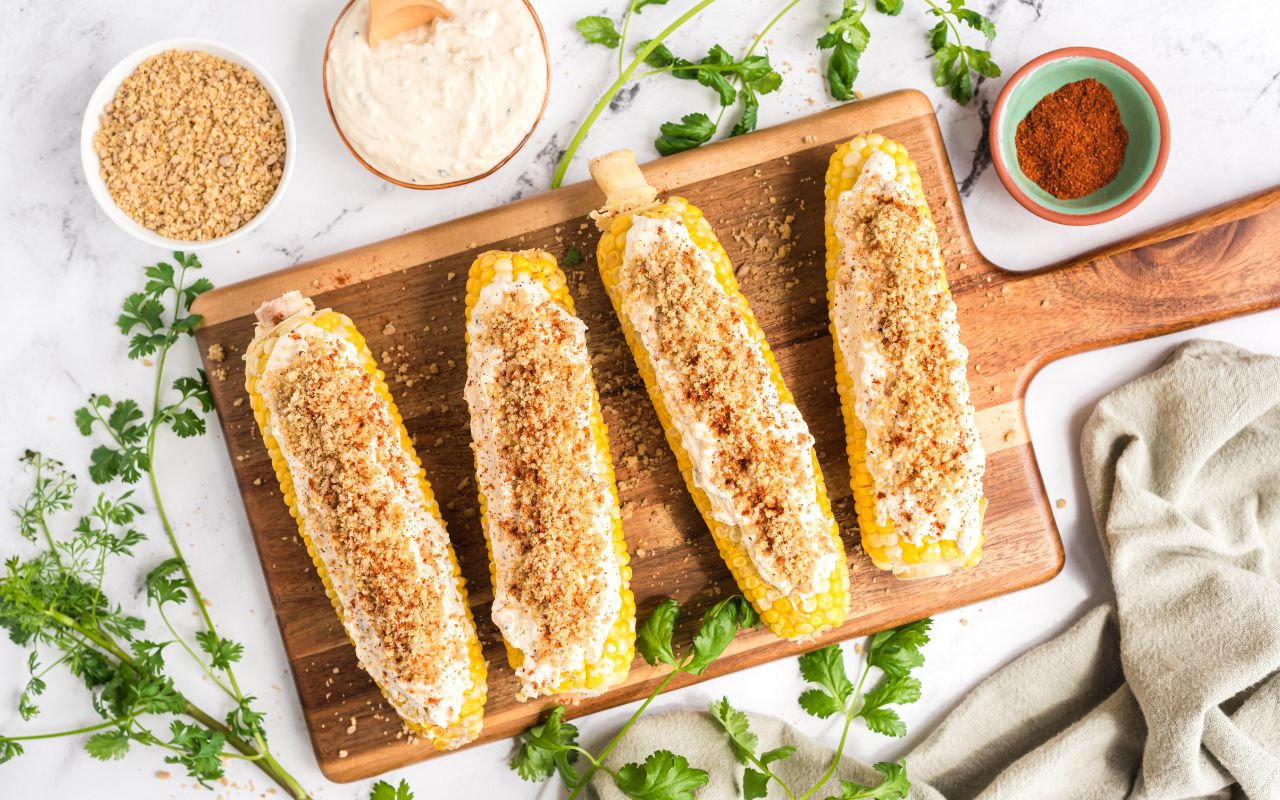
Whole grains, including organic corn, reduce inflammation thanks to their high fiber and phytonutrient content. Packed with ferulic acid, coumaric acid, anthocyanins, and carotenoids, corn provides five grams of fiber per cup. Enhance the nutritional benefits of corn with omega-3-rich Vegan Walnut Parmesan. The vibrant flavors of Mexican Street Corn are a plant-based delight sure to tantalize your taste buds!
6. Millet Jalapeño Corn Casserole
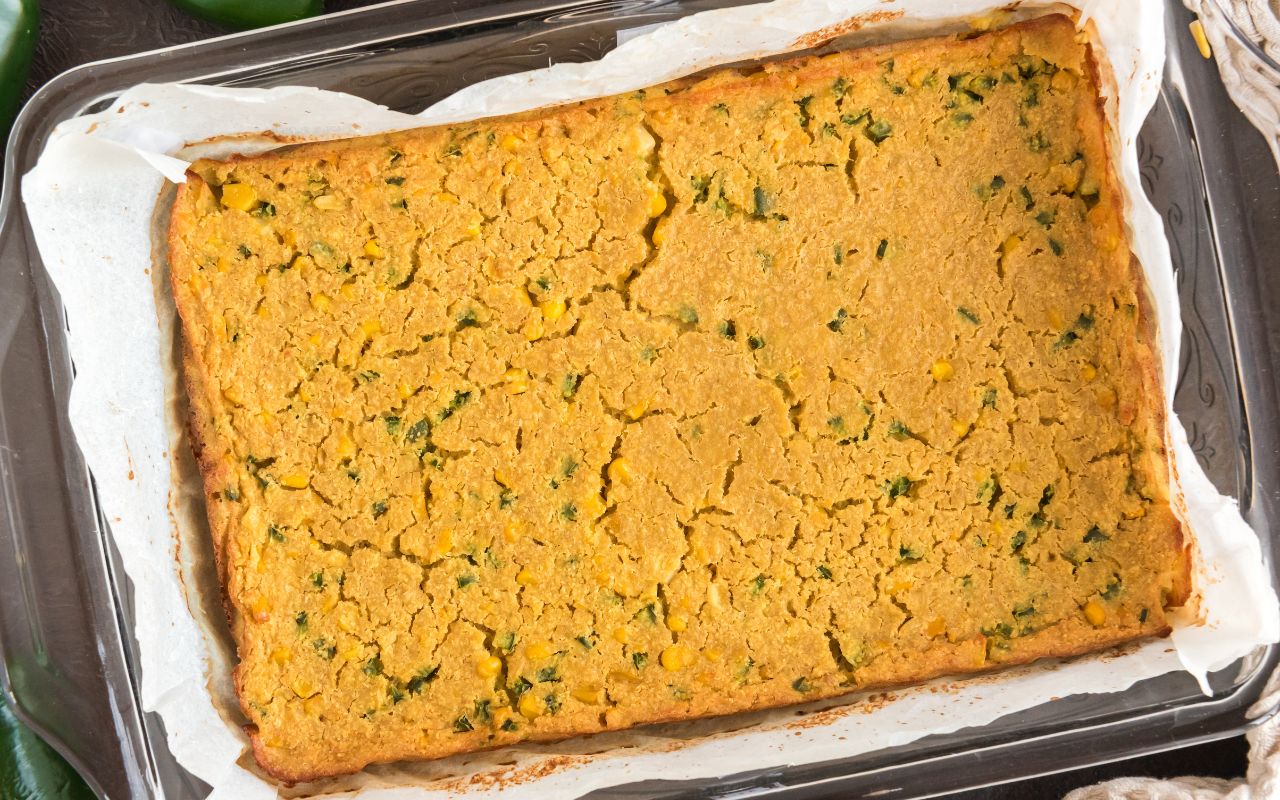
Introducing the Millet Jalapeño Corn Casserole! This dish features organic millet and sweet corn, both rich in fiber and anti-inflammatory properties. A luscious base of creamy coconut milk and nutty nutritional yeast is complemented by the savory flavors of garlic and onion powder. Fresh jalapeño slices add a zesty kick, creating a perfect blend of sweet and savory with a subtle heat. This plant-based casserole is an easy-to-prepare, wholesome way to enjoy the sweet and wholesome flavors of corn any night of the week.
7. Jalapeño Cornbread
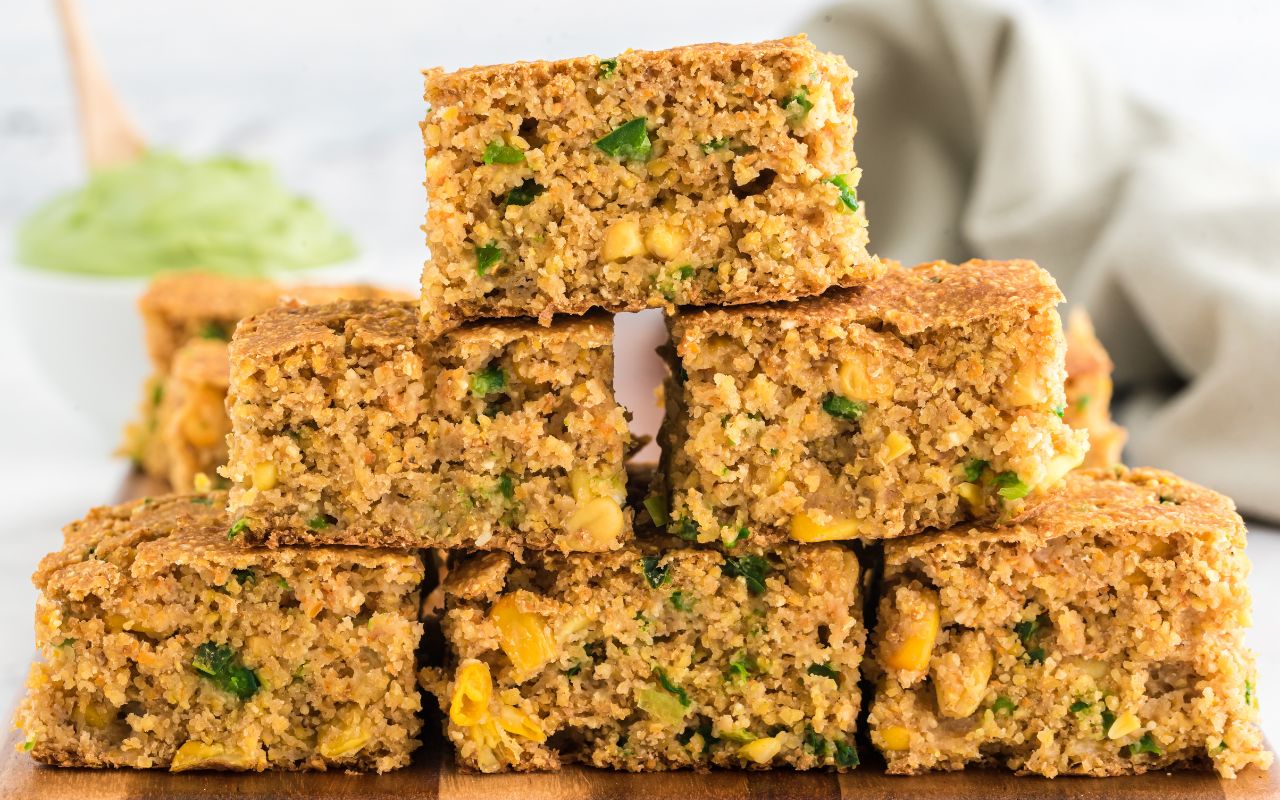
It wouldn’t be a corn recipe round-up without a nourishing cornbread recipe! This Jalapeño Cornbread is moist, flavorful, and satisfying with its slightly sweet and savory notes. With chunks of sweet corn and peppery jalapeños, this cornbread makes a tasty addition to virtually any savory recipe. Tip: The bread makes a fun party appetizer — just cut it into bite-size pieces and serve warm!
Get Cooking with Corn!
Corn is more than just a summer barbecue staple. It has a rich nutritional profile and many culinary uses. Throughout this article, we’ve delved into how to select and store corn for optimal freshness, the best times to enjoy it in season, and ways to prepare and cook this adaptable ingredient.
Whether you’re grilling it for a BBQ, stirring it into a comforting vegan chowder, or transforming it into a festive salsa, corn brings its sweet, satisfying crunch to every dish. Enjoy the simple pleasure of cooking with corn!
Tell us in the comments:
- What’s your favorite way to eat corn?
Featured Image: iStock.com/icetocker



